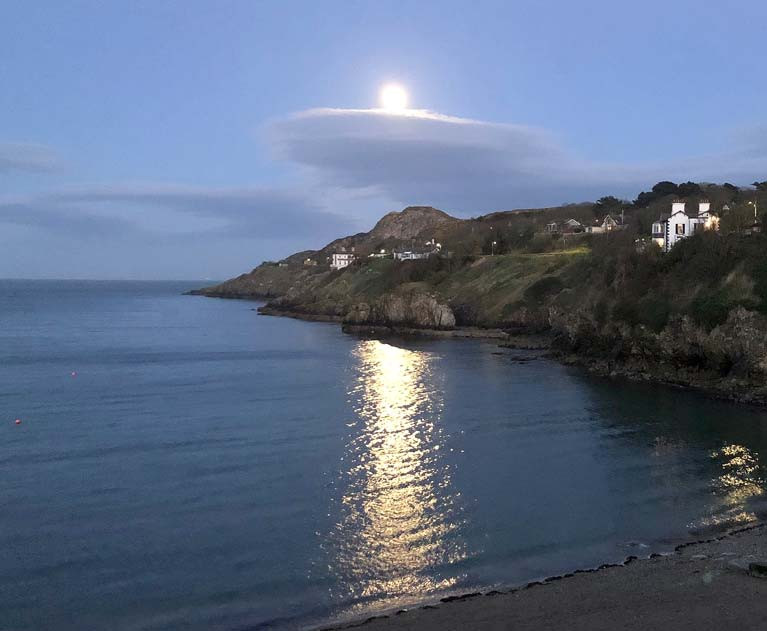We’ll begin by making it clear that this remarkable image of Tuesday night’s super-moon over Balscadden Bay in Howth was taken at 2041hrs by a Howth resident within the prescribed two kilometres of her residence, using a carbon-neutral means of transport. And while the moon itself and the cloud with it have probably caused rumours of Unidentified Flying Objects (for they’re regular visitors to the peninsula and had scheduled flights to Mars before the lock-down), another area of interest is the high level of literary associations within this one remarkable photo.
For the little cliffside house at centre has a plaque which claims association with the Yeats family. But while the poet’s often penniless father John Butler Yeats did indeed briefly accommodate his family there around 1880, their two year stay in Howth in the early 1880s was in the harbour-side house where traditional boat enthusiast Mick Hunt and his wife Elaine now live. W B Yeats' sisters remembered it as only crowded, cold and damp, but as anyone who has visited the house today will know, Mick has achieved a miracle of transformation to make it a warm, dry, airy and welcoming place.
But in any case, the more immediate association of that little cliffside house, or the next one along to the right of the photo, is that Gaynor Crist, the original for J P Donleavy’s Ginger Man, lived there for a while in the 1940s when he was a GI Bill student at Trinity College. Many of us find a re-reading of The Ginger Man, so symbolic of our younger days, to be a rather depressing experience today, but nevertheless it reveals that while ensconced on the Balscadden cliffs in a rented house in which the waves moaned and crashed in the cliff caves close underneath, the Ginger Man found he was completely broke and very hungry.
But he noted that one of the beds was covered in a pink blanket. So he took the scissors from the kitchen and cut the blanket into strips, one of which he then modified into a passable resemblance of a scarf. As he favoured tweed jackets and rustic apparel, with this scarf he immediately became the very image a a Trinity sporting pink (the highly-respected TCD equivalent of an Oxford blue), and was thus able to stride with confidence down the the Balscadden Road and along the harbour front to Findlater’s splendid grocery emporium (these days it's Michael Wright’s gastro-pub of the same name), wherein he had no trouble running up a credit list as long as your arm of a substantial and comprehensive order of high quality victuals, which were then promptly delivered to Balscadden by one of the familiar Findlater vans.
It is not thought that the bill was ever paid…..As for Findlater’s in Howth, it is written for ever into local sailing history, for when the Howth 17 class got going in 1898, it was in their sailing instructions that “The time (for starts) to be taken from Findlater’s clock”.































































